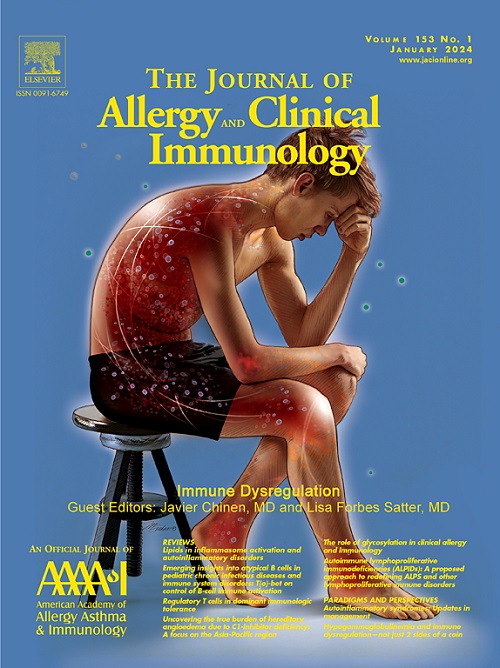从罕见到更常见:组学在改善严重炎症和高炎症条件的理解和治疗中的新兴作用。
IF 11.4
1区 医学
Q1 ALLERGY
引用次数: 0
摘要
炎症是许多疾病的致病驱动因素,包括动脉粥样硬化和类风湿性关节炎。“过度炎症”可以被视为任何对宿主有害的炎症反应,无论原因如何。在医学上,过度炎症被定义为严重的、有害的、波动的、全身的或局部的炎症,伴随着细胞因子风暴的存在。它与罕见的自身炎症性疾病有关。然而,包括基因组学、蛋白质组学和代谢组学在内的组学技术的进步表明,它在败血症和严重的COVID-19中更为常见。本综述以蛋白质组学为重点,强调了组学在这一转变中的关键作用。通过对研究的探索,我们展示了组学技术如何在高炎症领域改善诊断、预后和靶向治疗。我们还讨论了先进技术、多组学方法和人工智能(AI)在分析复杂数据集以开发靶向治疗方面的整合,以及它们在彻底改变炎症临床方面的潜力。我们强调个性化医疗方法的有效治疗,并概述了挑战,包括对标准化方法的需求,强大的生物信息学工具,以及关于数据隐私的伦理考虑。这篇综述的目的是提供对过度炎症的分子机制的全面理解,并强调组学技术在成功临床管理中的潜力。本文章由计算机程序翻译,如有差异,请以英文原文为准。
From rare to more common: The emerging role of omics in improving understanding and treatment of severe inflammatory and hyperinflammatory conditions
Inflammation is a pathogenic driver of many diseases, including atherosclerosis and rheumatoid arthritis. Hyperinflammation can be seen as any inflammatory response that is deleterious to the host, regardless of cause. In medicine, hyperinflammation is defined as severe, deleterious, and fluctuating systemic or local inflammation with presence of a cytokine storm. It has been associated with rare autoinflammatory disorders. However, advances in omics technologies, including genomics, proteomics, and metabolomics, have revealed it to be more common, occurring in sepsis and severe coronavirus disease 2019. With a focus on proteomics, this review highlights the key role of omics in this shift. Through an exploration of research, we present how omics technologies have contributed to improved diagnostics, prognostics, and targeted therapeutics in the field of hyperinflammation. We also discuss the integration of advanced technologies, multiomics approaches, and artificial intelligence in analyzing complex datasets to develop targeted therapies, and we address their potential for revolutionizing the clinical aspects of hyperinflammation. We emphasize personalized medicine approaches for effective treatments and outline challenges, including the need for standardized methodologies, robust bioinformatics tools, and ethical considerations regarding data privacy. This review aims to provide a comprehensive overview of the molecular mechanisms underpinning hyperinflammation and underscores the potential of omics technologies in enabling successful clinical management.
求助全文
通过发布文献求助,成功后即可免费获取论文全文。
去求助
来源期刊
CiteScore
25.90
自引率
7.70%
发文量
1302
审稿时长
38 days
期刊介绍:
The Journal of Allergy and Clinical Immunology is a prestigious publication that features groundbreaking research in the fields of Allergy, Asthma, and Immunology. This influential journal publishes high-impact research papers that explore various topics, including asthma, food allergy, allergic rhinitis, atopic dermatitis, primary immune deficiencies, occupational and environmental allergy, and other allergic and immunologic diseases. The articles not only report on clinical trials and mechanistic studies but also provide insights into novel therapies, underlying mechanisms, and important discoveries that contribute to our understanding of these diseases. By sharing this valuable information, the journal aims to enhance the diagnosis and management of patients in the future.

 求助内容:
求助内容: 应助结果提醒方式:
应助结果提醒方式:


